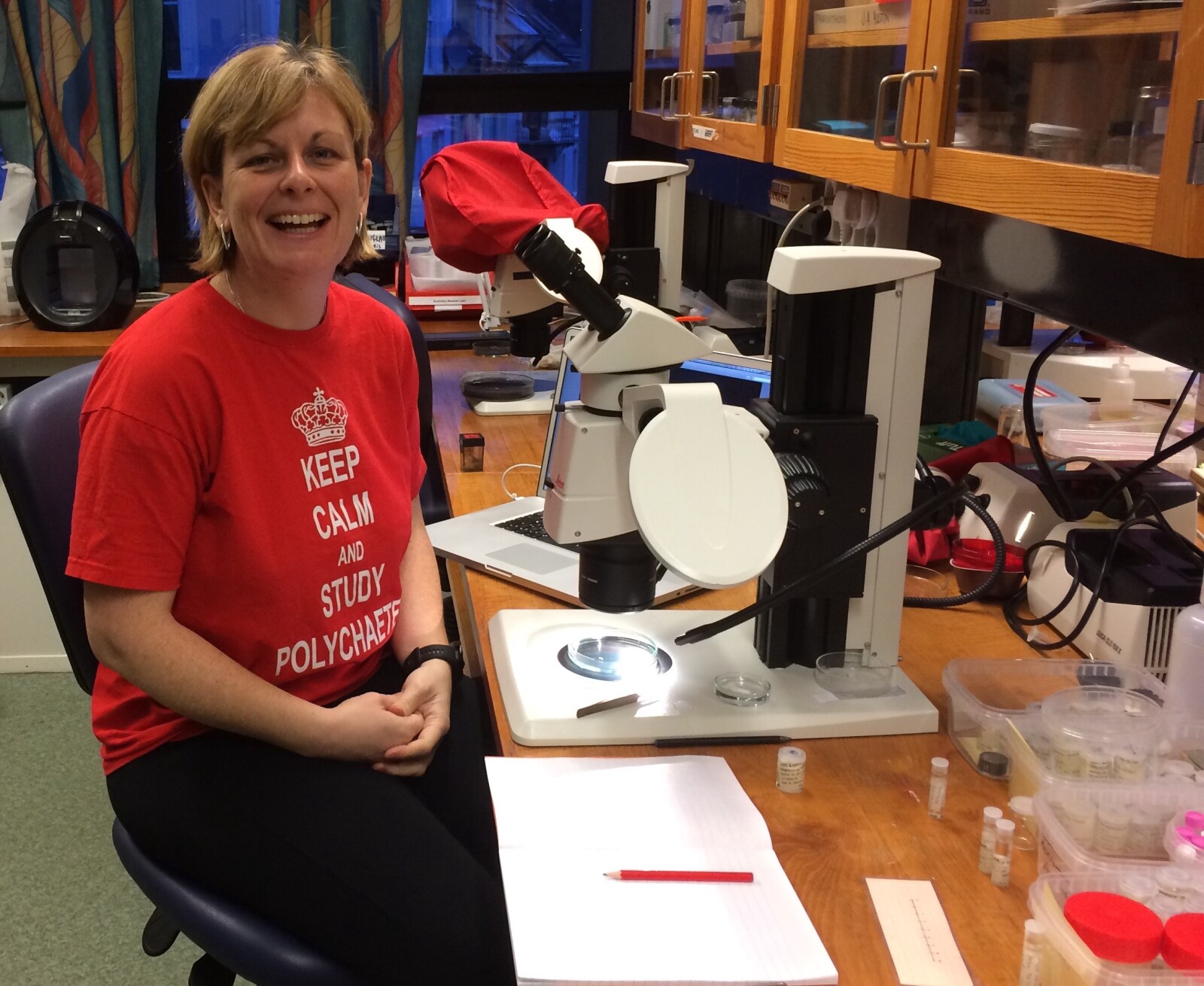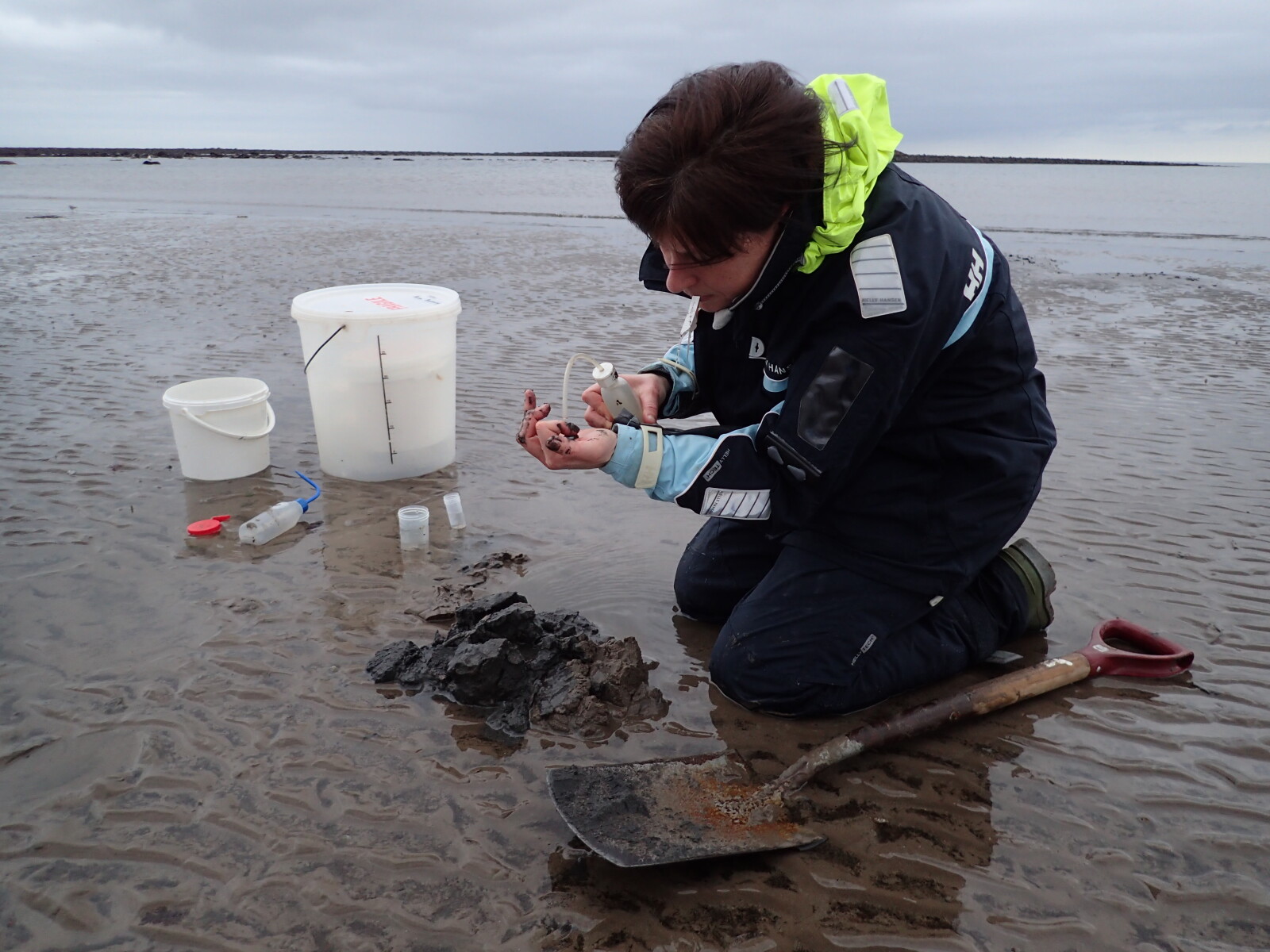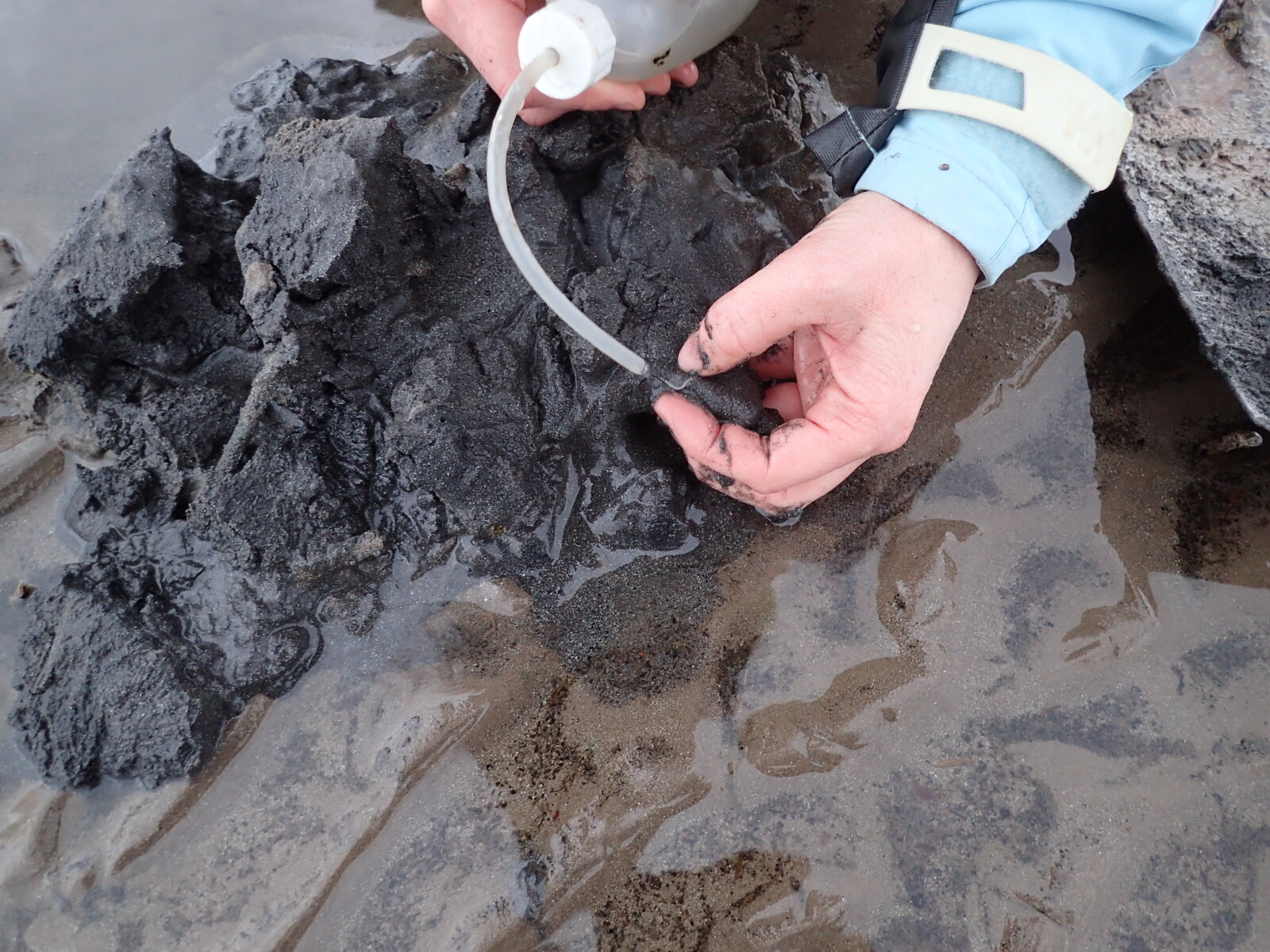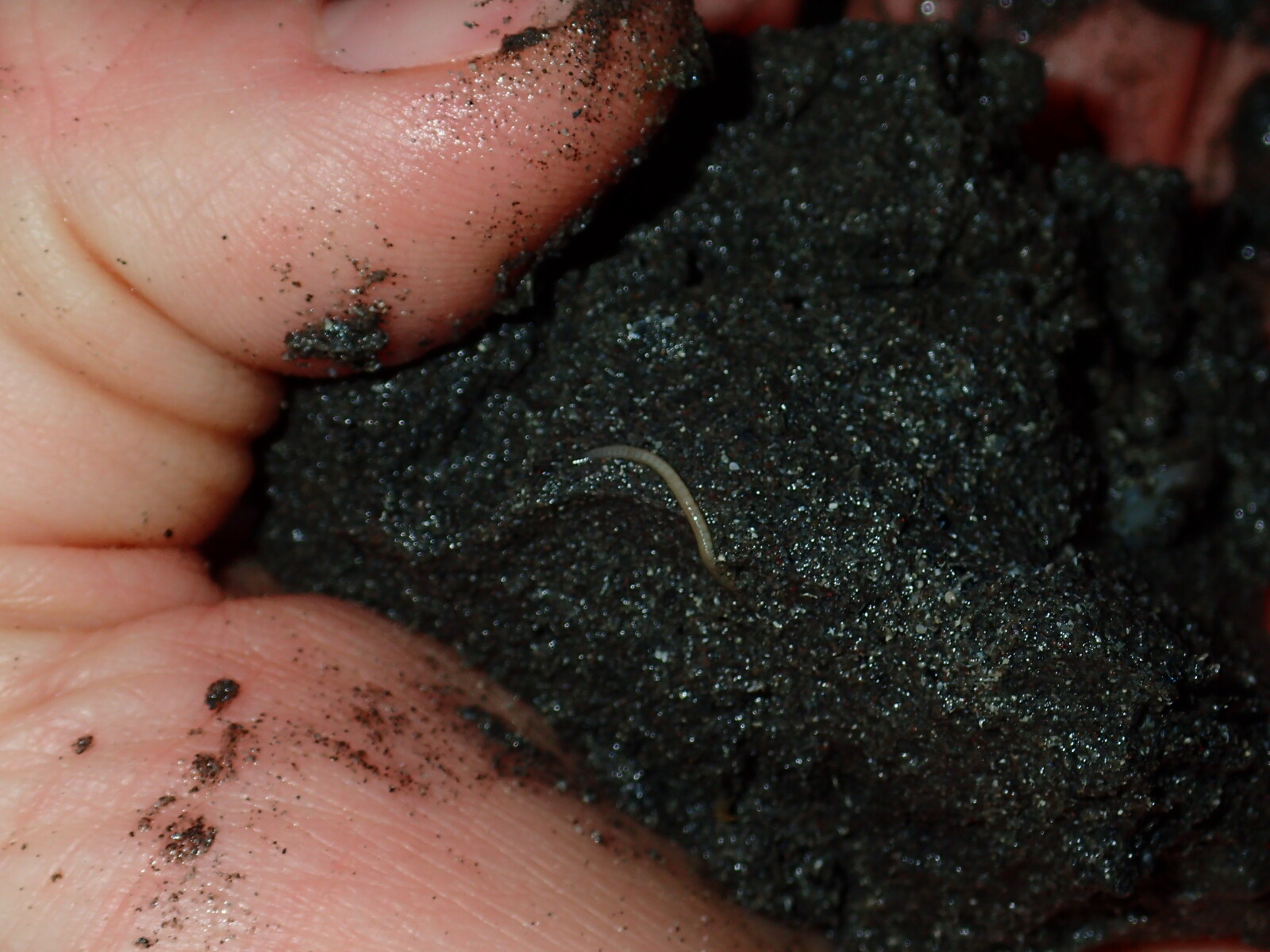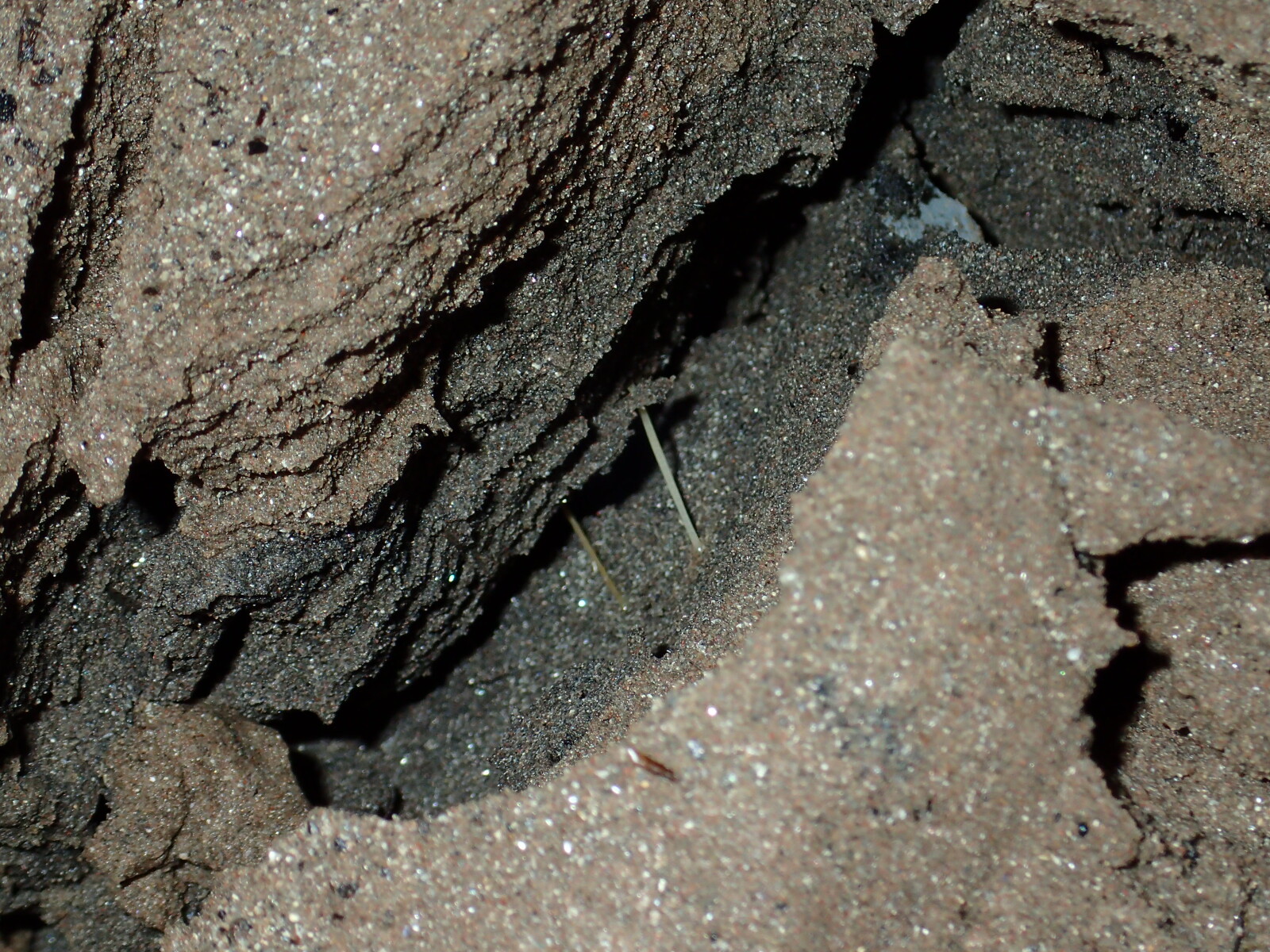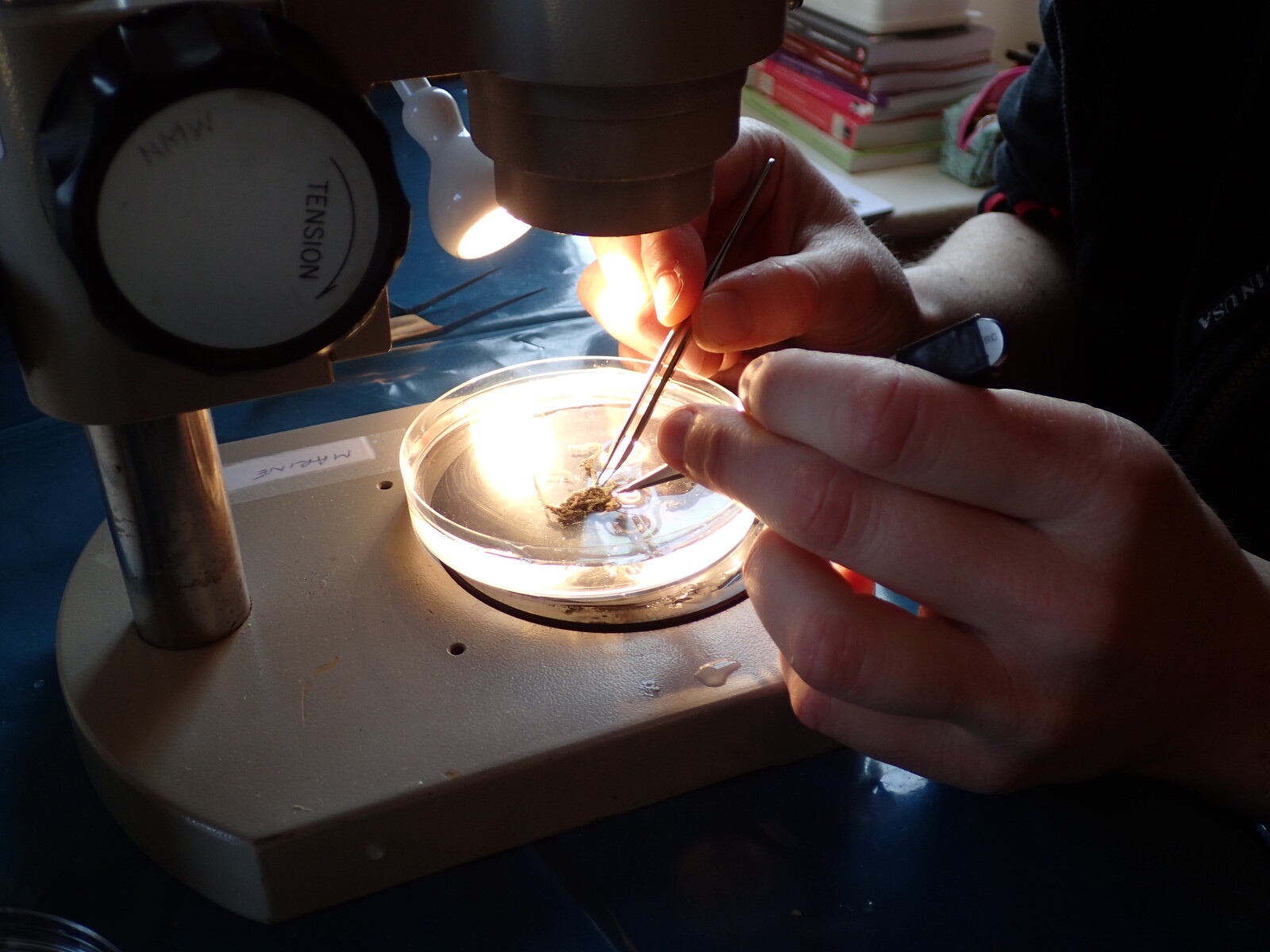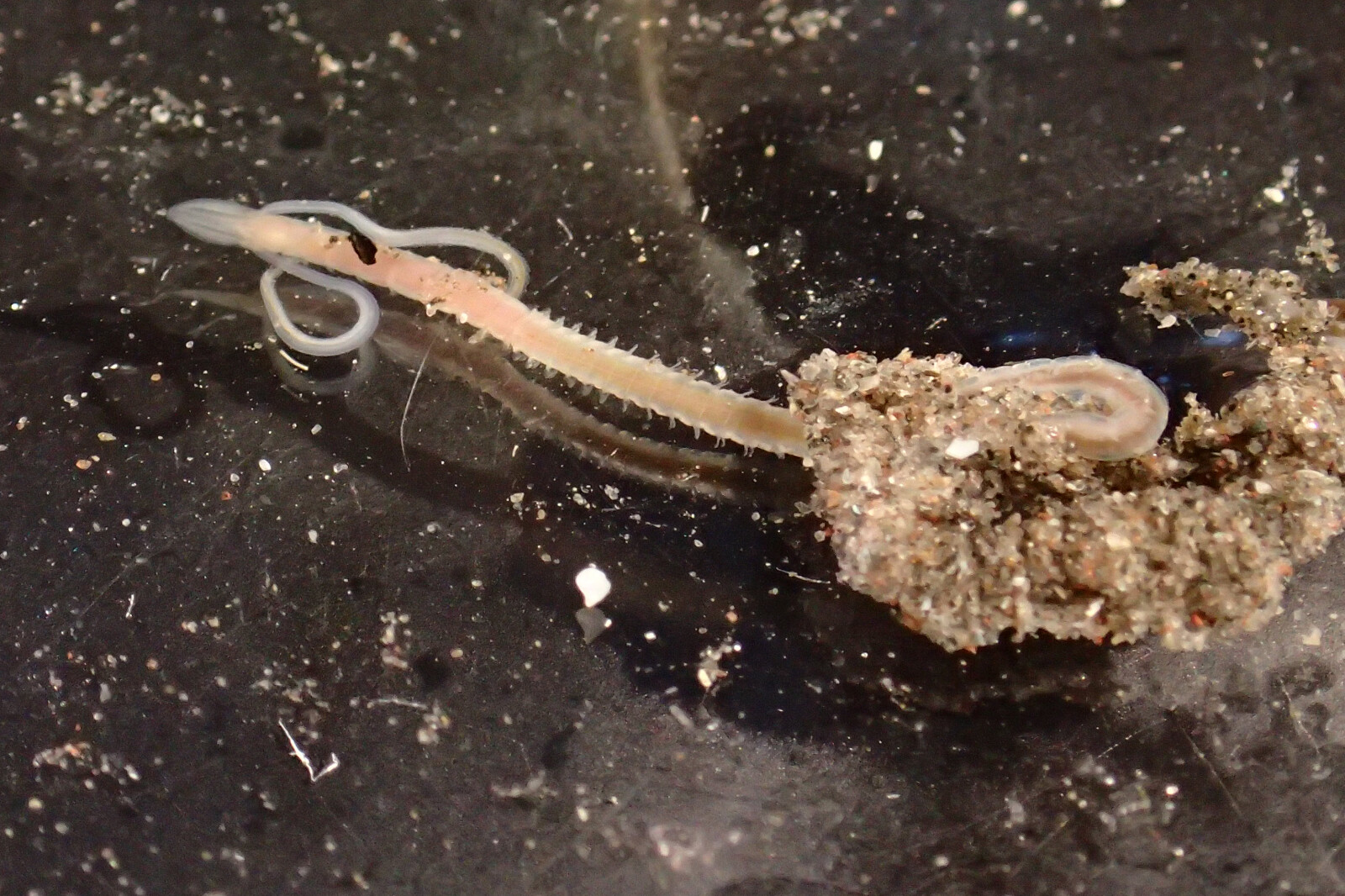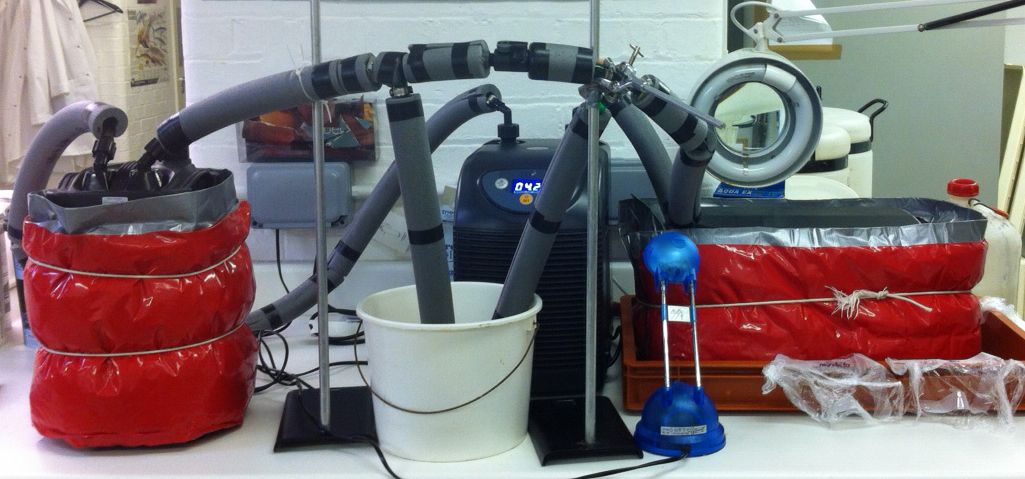Worms that Dig
, 24 February 2015
Our trip to collect shovelhead worms (a type of marine bristleworm called a magelonid) at Berwick-upon-Tweed started last Thursday (19th) at 06.30, giving us plenty of time on the shore before low tide. We were extremely lucky with the weather, as although it was only 7 degrees, the sun was out and it wasn’t raining. Staff at the museum specialize in this fascinating group and this particular trip was aimed at collecting animals to further our understanding of the biology of the group but also to gain specimens for the Museum’s natural history collections. Magelonids are extremely abundant on this shore and material used in the description of the British species, Magelona johnstoni was collected here by Head of Invertebrate Biodiversity Andy Mackie, who was one of the team who described the species back in 2000. The species was given its name in honour of the work carried out by the naturalist Dr George Johnston in this region.
Although, abundant on this shore, finding and collecting animals which are less than 1 mm in width can be tricky! These animals are rather long and fragile and a great deal of care has to be taken when collecting them. Animals are gently removed from the sand using a water bottle and soft forceps and placed into a cool box to keep them cool on the journey home. Once back to our makeshift laboratory I was able to identify and observe them for our research. We have designed a specialist tank in order to observe them over longer periods of time as well. We have successfully kept animals in this tank for nearly two years. We are hoping to observe the difference between three species, which can be found on this shore, Magelona johnstoni, Magelona mirabilis and Magelona filiformis. A fourth species is known to occur in low numbers on this shore, however, we were unable to locate any specimens for study this time.
We spent four days on the shore at Berwick-upon-Tweed collecting animals and although the weather did turn and temperatures on the beach dipped significantly it is a lovely shore to collect on. The tank and the animals have now made the long trip back to Cardiff and are now in the marine laboratory at National Museum Cardiff. We will continue to observe and publish research on these fascinating and also beautiful creatures (although may be I am somewhat biased, I shall leave it up to you whether you agree or not!).
Watch this video, to see how we sample shovelhead worms.
